‘Understanding the Unspoken: Looking into the Unknown’ | Dar es Salaam, Tanzania
A review of the 'Last Image Show', the young artists international exhibition curated by Gadi Ramadhani in collaboration with Emergent Art Space at the Alliance Française of Dar es Salaam, by artist and writer Valerie Amani in Tanzania.

The primacy of sight is one of our earliest lessons. We demand, deeply, instinctively, that things declare themselves to our eyes before approaching any of the other senses. We learn earlier than we perhaps learn anything else that the things that wish us harm wish first not to be seen; and we see first, before thinking, before feeling, and at times before knowing.
Our innate longing to see in order to believe must have crossed the minds of the first visual artists; an active function of art has been to lure, with inferences of spectacle, an audience that will then be confronted into something more fully sensory.

Silence, as a premise, is a subversion of this. Silence, seemingly so close to nothing—key to our conception of nothing— as a theme, guarantees nothing. If it lures the audience, then it lures with the purest of promises - a promise of looking into the unknown, of understanding the unspoken. Silence is perhaps one of the rare themes more suited to being presented in an exhibition space than on a page. It is a theme that most lends itself to curation, whose notes can be heard in choice of placement and style of arrangement as much as in the ideas contained in what is arranged.
The 'Last Image Show', is a journey that began from a journey between Dar es salaam and San Francisco. Gadi Ramadhani, artist and curator, was the 'architect' behind it, alongside Emergent Art Space acting as a catalyst for the realization of this international art exhibition. Both Ramadhani and the Emergent Art Space team aimed to bring the work of young artists from around the globe to Tanzania. They succeeded by featuring an array of visual art works by 33 artists, spanning 4 continents and 21 countries. Artists employed a diversity of media but were united in confronting the common theme of Silence.
Gadi Ramadhani, who founded the project, quotes Brazilian educator, Paulo Freire, in his curatorial statement. “The system of dominant social relations creates a ‘Culture of Silence’ that instills a negative, silence and suppressed self-image onto the oppressed.”
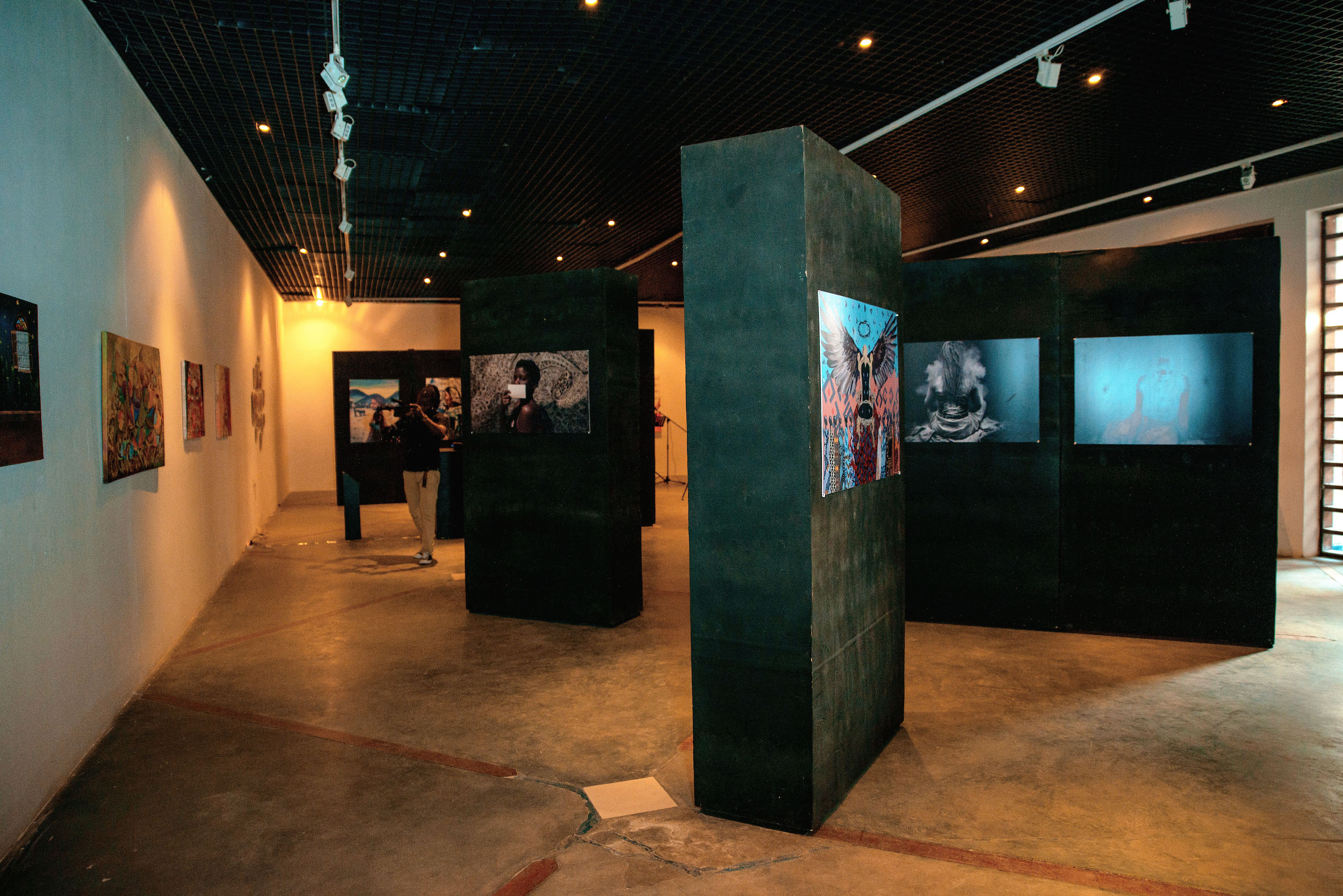
Through this lens, silence becomes the gravest of weights - if enforced it is the unfortunate worldwide shorthand, for the common act of forcing men and women to live their inward pain in stances of contentment.
The artists participating in the 'Last Image Show' were asked to respond to this kind of silence: silence birthed from fear, oppression or lack of representation. The chosen space was the Alliance Française gallery in Dar es salaam, where Ramadhani, as curator, guided their visions with a sparse, fractured arrangement – white wall around large black units that sit together intimately, like a maze. Stories wrapped in that singular noiseless body, side by side, swung from the unsaid to the unsayable.
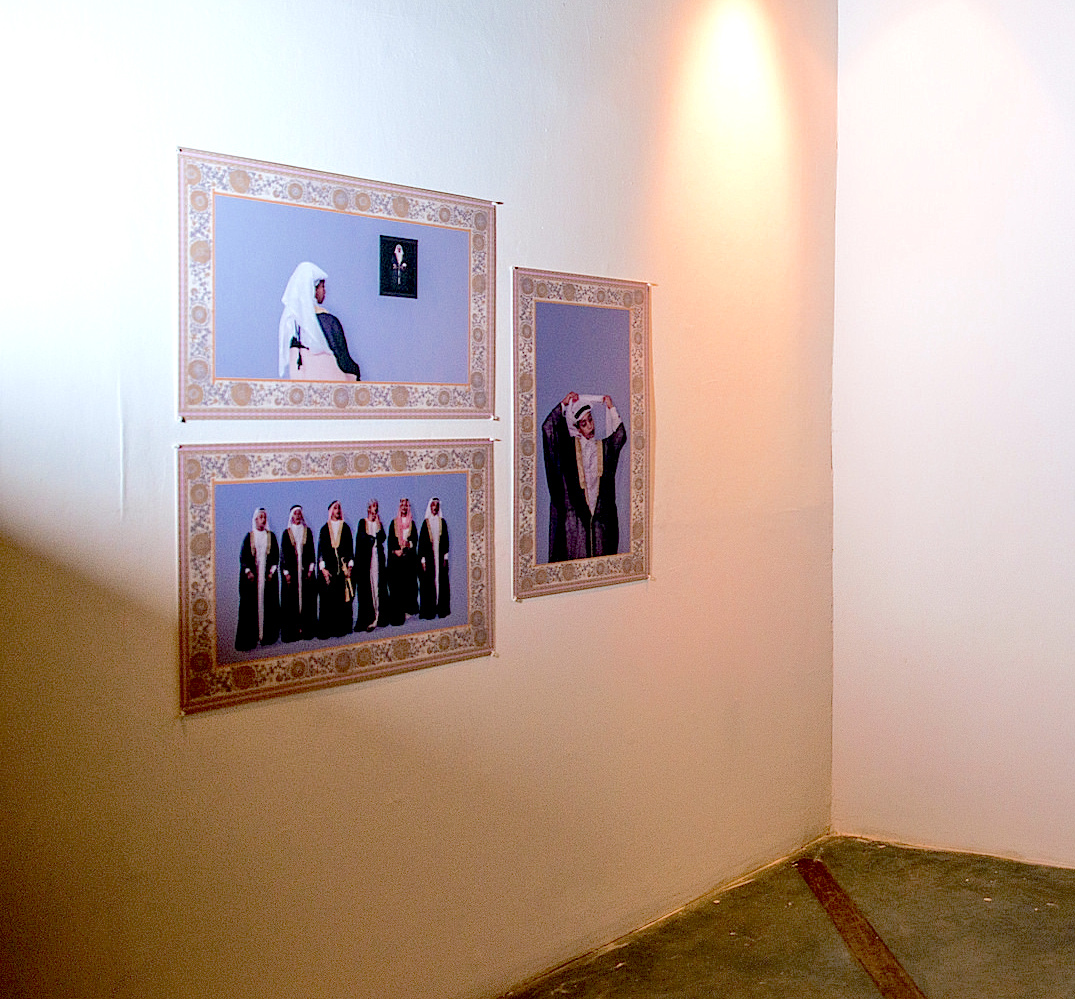
With such a wide array of multidisciplinary international artists, the exhibition achieved a certain irony on first sight: a slight disconnect on the wonder and variety of ways the chosen artists are able to speak their truths about the unspoken. However, close observations of each piece created a unique intra-language of human sincerity. This sincerity came in different forms.
GCC Exploration, a photo series by Aisha Jemila Daniels (Qatar), is almost playful in its approach, confronting its subject with a millennial marriage of true concern and self-detachment. The artist poses in the royal garb of Arabian sheiks in self-aware stances. She evokes the self-obsession typical of the internet age and, by doing so, both subverts the masculine imagery of middle eastern politics and critiques the tendency of the elite to deify individual voices. Daniels' is one in a number of works examining the silence of women.
Another exhibiting artist, Gladys Kalichini (Zambia) offers in her statement, “the erasure of women’s voices from history and collective memory". She is speaking specifically of Zambian history; and her work, projected photos in black and white featuring a woman covered in white powder. Her works flirt with burial and exhaustion - presenting the subject as steadfast, but perpetually close to defeat. She represents the fragile miracle of remaining.

Kalichini’s photos are effectively paired by Ramadhani with the work of Eze Mariagoretti Chinenye (Nigeria), whose photo Mystification of Womanhood - features a woman whose face is tangled by strings that rise from the sack she wears. She stands at an angle, projecting a stare containing a fury that screams for freedom.
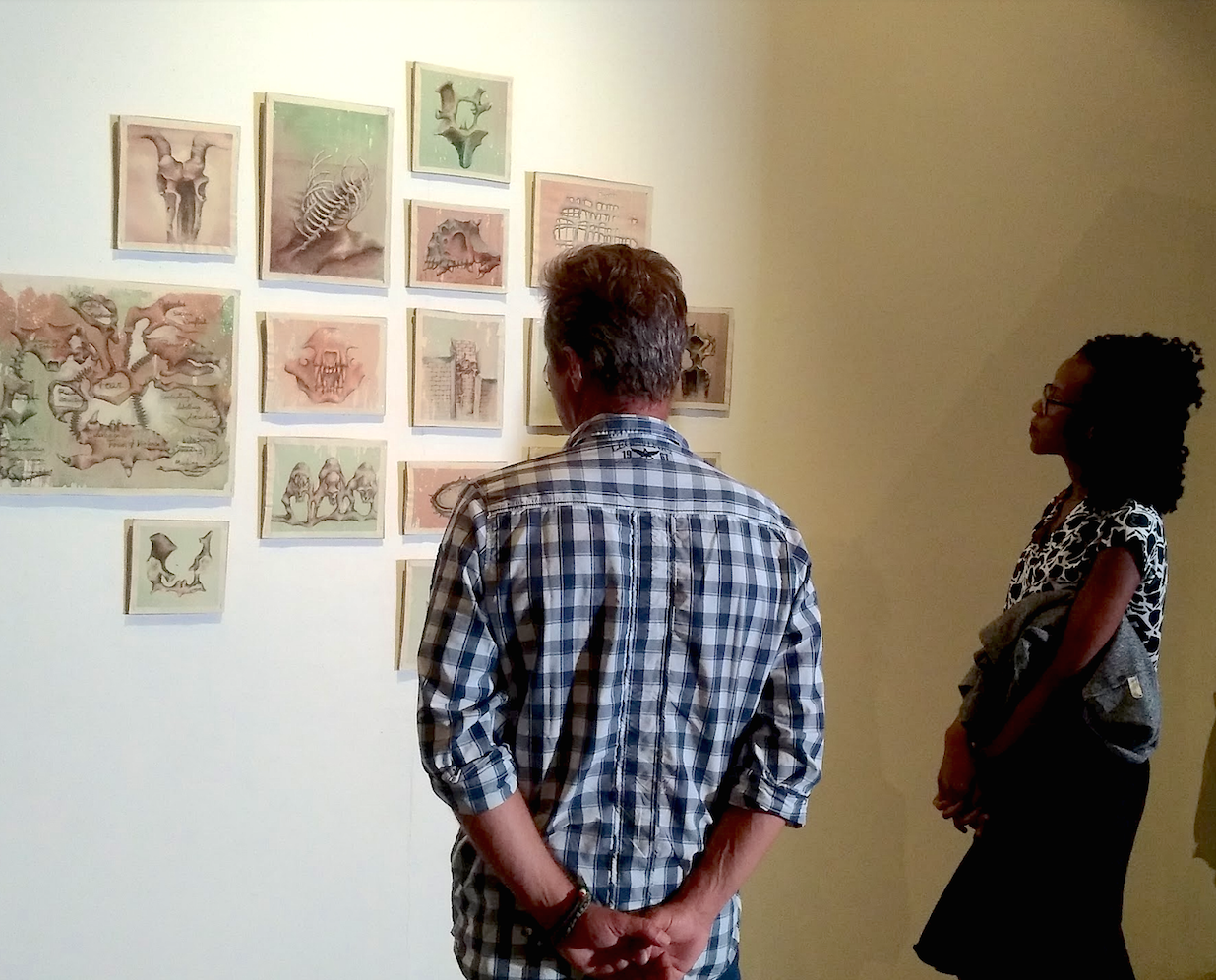
The exhibit was not limited to silences of the individual. Asmaa Elmongi (Egypt) presented her painting as a mind map, with different forms of silence circling one central theme, fear. Her piece, I Need to Talk, depicts what looks like a diagram of reconstructed skeletons of ancient creatures. The unfamiliarity of the bones, paired with her biological diagrams, present silence as part of our outdated understanding of fear. They appear to represent the manner in which we seek to extinguish, rather than understand the things that make us fearful.

Nature also features in the work of Dengke Chen (China/US), who uses cutting edge technology, in this case augmented reality, to question our understanding. One work, Tank Man, deconstructs the iconic Tiananmen Square protest; that of a student standing tall before a line of tanks. He turns the tanks into bright yellow diggers and places dogs on top of each and a rabbit in place of the student, as if to ask whether such courageous acts are too removed from modern consumption. I wonder whether the way we learn and understand each other is now so removed from reality that even courage needs to be colored in to appear less vividly factual and more processed.
The exhibition also featured a striking work by Kristina Rutar (Slovenia), whose fetal-like sculptures hung near the center of the floor piece, like something alive but biding its time, silent only for the moment. While the depictions by Isha Bawiskar (India) of childlike night scenes presented hope and a different kind of silence, one containing curiosity and the potential of wonder. Her dreamlike mirage provides a contrast that perhaps encapsulates the overall effect of the exhibition; that the purpose of instilled silence is to inhibit creative enquiry and limit the world we see to only the things we are told about it.
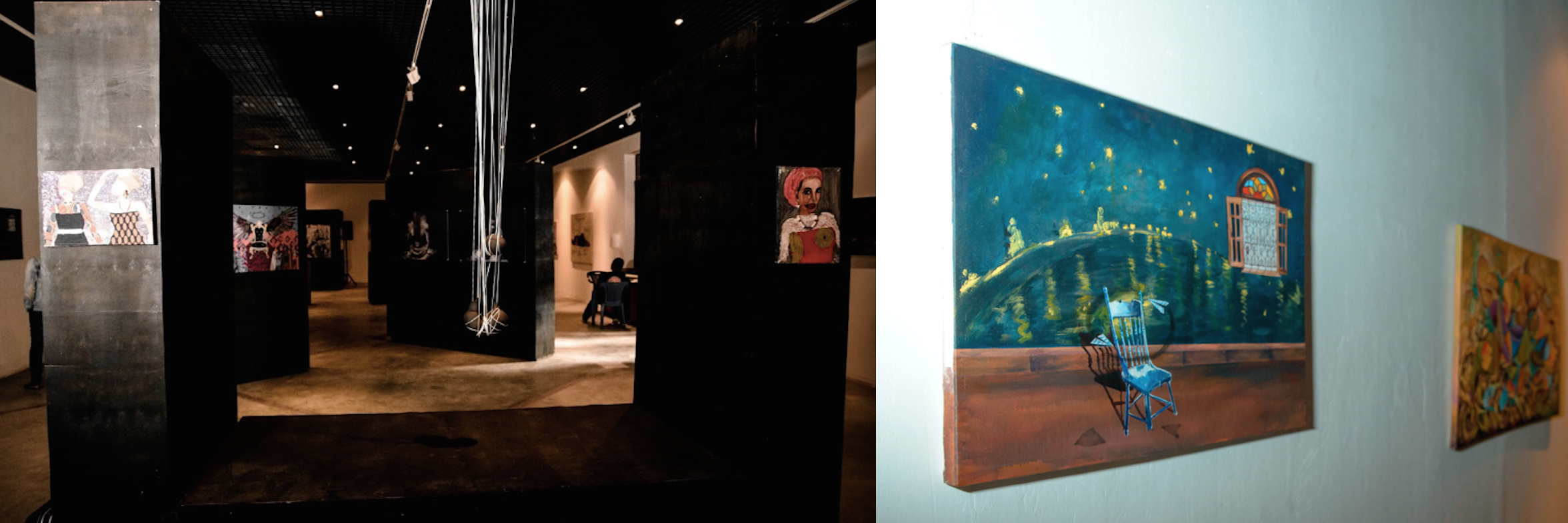
The exhibition makes us travel from city to city, achieving its aims. It reminds us to open our eyes a little wider so as to not be blind to the rich texture of existence.
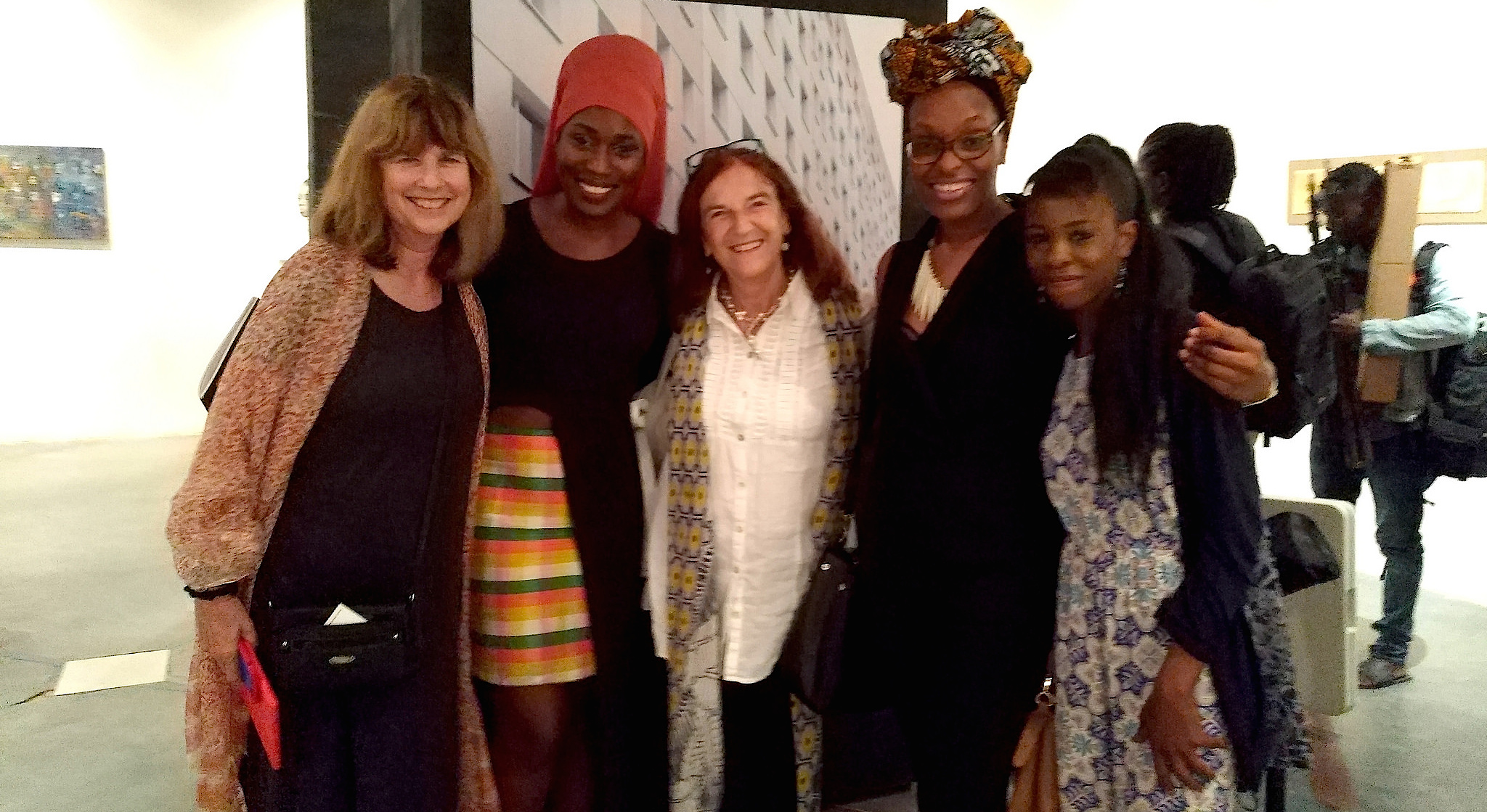
Valerie Amani is a fashion designer and visual artist based in Dar es salaam, Tanzania with a passion for writing. She is currently the Visual Art Program manager at Nafasi Art Space, one of the leading contemporary art platform in the country, while designing for her fashion brand Kahvarah. She uses digital platforms to share her art and writing, and is currently working on developing a program that will educate and support young female artists in Tanzania.
Instagram: @ardonaxela